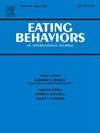‘Harder to reach’ versus reaching harder: Exploring preferred dissemination pathways to a digital binge-eating intervention for adults with or at risk of food insecurity
IF 2.4
3区 医学
Q2 PSYCHIATRY
引用次数: 0
Abstract
Objective
Individuals from minoritized and under-resourced subpopulations, such as individuals with food insecurity, are sometimes considered “harder to reach.” Instead, tailored dissemination pathways may be required to reach them. We sought to learn how best to reach individuals with food insecurity seeking digital intervention for binge eating.
Method
As part of continued design work in two ongoing trials testing a digital intervention for binge eating, we conducted a secondary exploratory analysis of individuals' preferred dissemination channels, modes, and materials. We assessed individuals' preferences at baseline via a pre-intervention questionnaire. Adults (n = 90) with binge eating and food insecurity or at risk of food insecurity completed the questionnaire. We also compared their preferences to adults (n = 106) with binge eating and without food insecurity, and highlighted differences of p < 0.10.
Results
Individuals with or at risk of food insecurity preferred dissemination via community organizations and events, healthcare centers, fitness centers, and online sources, more than trusted sources (e.g., clinicians). They preferred websites over other dissemination modes (e.g., videos). They were most interested in useful promotional materials (e.g., grocery bags). Compared to those without food insecurity, individuals with or at risk of food insecurity were more interested in dissemination via community organizations and events, and less interested in dissemination through doctors.
Discussion
Findings indicate tailored dissemination strategies could improve reach to individuals with or at risk of food insecurity. This study is a first step toward better engaging this subpopulation. Future work should disseminate through the preferred channels, assess their reach, and iterate as needed.
“更难接触”与“更难接触”:为有或面临粮食不安全风险的成年人探索数字暴饮暴食干预的首选传播途径
来自少数群体和资源不足亚群体的个人,如粮食不安全的个人,有时被认为“更难接触到”。相反,可能需要量身定制的传播途径来接触他们。我们试图了解如何最好地接触到寻求暴饮暴食数字干预的粮食不安全个体。方法:作为两项正在进行的测试暴食数字化干预的持续设计工作的一部分,我们对个体偏好的传播渠道、模式和材料进行了二次探索性分析。我们通过干预前问卷在基线时评估个体的偏好。有暴饮暴食和食物不安全或有食物不安全风险的成年人(n = 90)完成了问卷。我们还比较了他们与暴饮暴食和没有食物不安全的成年人(n = 106)的偏好,并强调了p <;0.10.结果:有或有食品不安全风险的个人更倾向于通过社区组织和活动、医疗保健中心、健身中心和在线来源传播信息,而不是通过可信的来源(如临床医生)传播信息。与其他传播方式(如视频)相比,他们更喜欢网站。他们最感兴趣的是有用的宣传材料(例如,杂货袋)。与没有粮食不安全的人相比,有粮食不安全或面临粮食不安全风险的人对通过社区组织和活动进行传播更感兴趣,而对通过医生进行传播不太感兴趣。讨论结果表明,有针对性的传播策略可以提高对粮食不安全或面临粮食不安全风险的个人的覆盖面。这项研究是更好地吸引这一人群的第一步。未来的工作应通过首选渠道传播,评估其影响范围,并根据需要进行迭代。
本文章由计算机程序翻译,如有差异,请以英文原文为准。
求助全文
约1分钟内获得全文
求助全文
来源期刊

Eating behaviors
Multiple-
CiteScore
4.20
自引率
3.60%
发文量
65
审稿时长
60 days
期刊介绍:
Eating Behaviors is an international peer-reviewed scientific journal publishing human research on the etiology, prevention, and treatment of obesity, binge eating, and eating disorders in adults and children. Studies related to the promotion of healthy eating patterns to treat or prevent medical conditions (e.g., hypertension, diabetes mellitus, cancer) are also acceptable. Two types of manuscripts are encouraged: (1) Descriptive studies establishing functional relationships between eating behaviors and social, cognitive, environmental, attitudinal, emotional or biochemical factors; (2) Clinical outcome research evaluating the efficacy of prevention or treatment protocols.
 求助内容:
求助内容: 应助结果提醒方式:
应助结果提醒方式:


